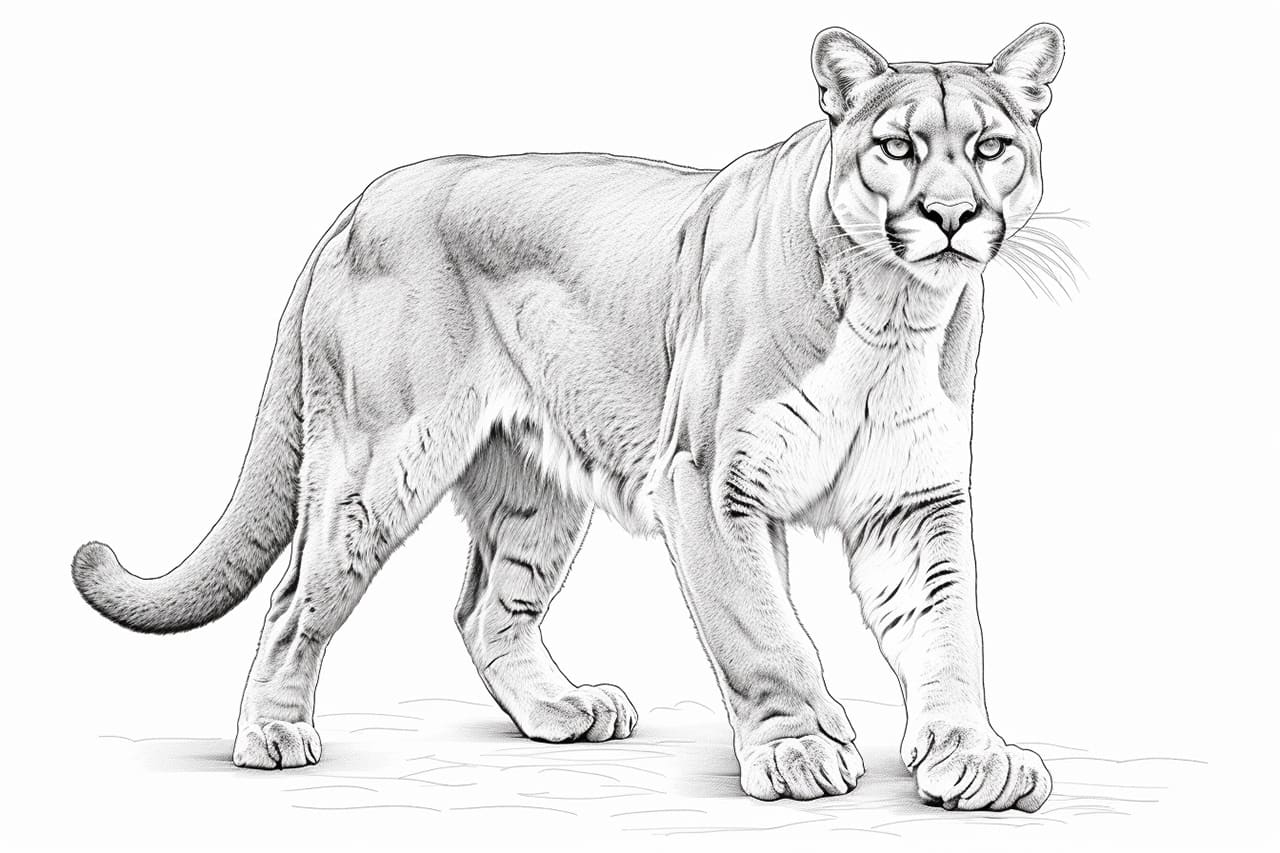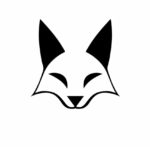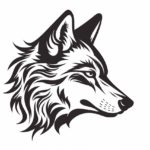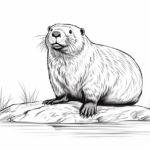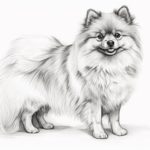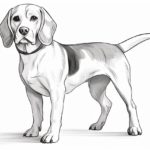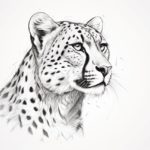Welcome to this step-by-step guide on how to draw a puma. In this article, you will learn the techniques and tips to create a realistic representation of this powerful and graceful animal. Grab your pencils and paper, and let’s get started!
Materials Required
Before we begin, let’s gather the materials needed for this drawing:
- Pencils (HB, 2B, 4B, and 6B)
- Drawing paper or sketchbook
- Eraser (kneaded eraser recommended)
- Pencil sharpener
Now that we have all our materials ready, let’s dive into the step-by-step instructions.
Step 1: Basic Guidelines
To start, lightly sketch an oval shape for the puma’s head. Then, draw a slightly curved line extending from the oval to form the back. Add two circles for the shoulders and another larger oval for the body, connecting it to the backline.
Step 2: Outline the Head
Using the basic guidelines, begin refining the shape of the puma’s head. Add the snout by drawing a triangular shape extending from the lower part of the oval. Sketch the ears, keeping them tall and pointy. Don’t forget to add the facial guidelines for the eyes and nose.
Step 3: Facial Features
Now, it’s time to focus on the puma’s facial features. Start by drawing the eyes, keeping them almond-shaped and placing them on the horizontal facial guideline. Add a small circle in each eye for the pupils. Beneath the eyes, draw a triangular nose, and give the puma a wide mouth with a subtle smile.
Step 4: Detail the Ears
Refine the shape of the puma’s ears by adding smaller curves and lines within the initial outline. Pay attention to the reference image or your imagination to capture the unique details of a puma’s ears. They should be pointy and have tufts of fur on the top.
Step 5: Define the Body
Working from the initial guidelines, sketch the puma’s muscular body. Pay close attention to the reference image or your knowledge of pumas to capture the curves and proportions accurately. Use long, smooth strokes to create the impression of fur as you outline the shape.
Step 6: Add Limbs and Tail
Next, draw the limbs and tail of the puma. Starting with the front legs, sketch them with a slight curve to convey the animal’s power and agility. Add details such as muscular definition and the puma’s characteristic large paws. For the hind legs, remember to capture the extended length and gracefulness. Finally, draw a long, thick tail with a slightly curved tip.
Step 7: Refine the Facial Details
With the main body structure complete, focus on detailing the puma’s face further. Add texture to the fur around the eyes, nose, and mouth. Pay close attention to shading and highlights to give depth and realism to the drawing. Use softer pencils, such as a 4B or 6B, for darker areas and a smooth transition of tones.
Step 8: Shading and Texturing
Now, it’s time to bring your puma to life with shading and texturing. Begin by shading the body with smooth, even strokes. Observe the reference image or use your intuition to create darker areas where shadows fall. Gradually build up the tones, applying lighter pressure for lighter areas and darker for shadows and depth.
Step 9: Final Touches
Take a step back and assess your drawing. Make any necessary adjustments to the proportions, shading, or details. Erase any stray lines or smudges, and refine the fur texture if needed. Remember, practice makes perfect, so don’t be afraid to keep refining until you’re satisfied with your masterpiece.
Conclusion
Congratulations on completing your drawing of a puma! By following these step-by-step instructions, you have learned how to capture the grace and power of this magnificent animal. Remember to experiment, practice, and have fun with your drawings. With time, dedication, and a little imagination, you’ll be amazed at how much progress you can make. Happy drawing!

